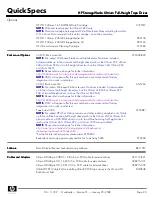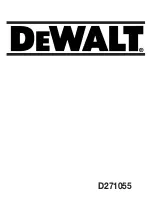
LTO Ultrium Technology
LTO Ultrium Technology
LTO Ultrium Technology
LTO Ultrium Technology Linear Tape-Open technology was developed by three leaders in the storage industry - HP, IBM, and
Quantum - who brought together their combined expertise in tape technology to develop an entirely new
format based on the best of existing technologies. Because LTO Ultrium technology was a new format, it
required no cumbersome support of legacy formats, so it could be designed without compromising on
reliability or performance. The LTO Program, a consortium of the three technology provider companies,
has developed a well-defined six-generation roadmap.
Ultrium LTO-1 and LTO-2 tape drive technologies from HP use a linear format of 384 tracks and 512
tracks (respectively), writing eight tracks simultaneously. Ultrium LTO-3 and the new LTO-4 tape drive
features a breakthrough in recording technology by writing sixteen tracks simultaneously on a linear
format of 704 tracks and 896 tracks (respectively). The data is written in a serpentine pattern; the tape
reverses direction after each set of tracks is written. This provides higher density recording, enabling
customers to lower costs and increase efficiency by storing more data on a single tape in an industry
standard format.
The LTO standard for backward compatibility is to write back one generation and read back two
generations; therefore:
First-generation Ultrium drives (HP Ultrium 230, HP Ultrium 232) read and write LTO 1 media
Second-generation Ultrium drives (HP Ultrium 460, HP Ultrium 448) read and write LTO 1 and
LTO 2 media.
Third-generation Ultrium drives (HP Ultrium 920, Ultrium 960) read and write LTO 2 and LTO 3
media and also read LTO 1 media.
Fourth-generation Ultrium drives (Ultrium 1840) read and write LTO 3 and LTO 4 media and also
read LTO 2 media.
As part of the LTO open standard, all HP tape drives and media offer the same standards of
compatibility with tape drives and media manufactured by other LTO vendors.
LTO data compression (LTO-DC) is an enhanced version of Advanced Lossless Data Compression
(ALDC) hardware compression. Compression is automatically turned off if the compressed data would
cause an overall expansion in data size, hence optimizing the available capacity on the media. Data
compression is also turned off if data is found to be uncompressible; thus, allowing for better data scans.
The system is used in all Ultrium tape drives.
The decision about which tape technology you should buy next should be based on your future, not your
past, investment. Choose the Ultrium format when you need the following advantages:
Maximum reliability, capacity and performance
Compatibility with a broad range of operating systems and servers (e.g., a mixed system
environment)
A legacy-free technology that uses the best attributes from a wide range of tape technologies
without any compromises for backward compatibility requirements
A solid roadmap for future generations of the technology
An open format available from multiple vendors
Lowest media cost of any 'superdrive' tape technology
QuickSpecs
HP StorageWorks Ultrium Full-Height Tape Drives
HP StorageWorks Ultrium Full-Height Tape Drives
HP StorageWorks Ultrium Full-Height Tape Drives
HP StorageWorks Ultrium Full-Height Tape Drives
Product Highlights
DA - 11739 Worldwide — Version 31 — January 25, 2008
Page 5






































